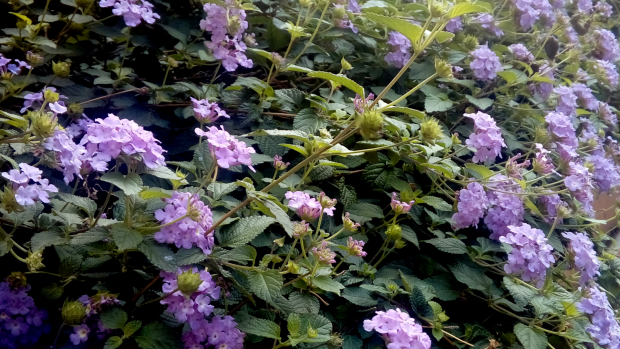
Photo : Purabi Deshpande / Research Matters
Seed dispersal is a vital process, whether we consider a rainforest or a semi-arid scrubland. The way plants are arranged in a community, as well as the number of each species found, is influenced by this process. The question of whether a species of plant can colonize and take over a new habitat is dependent on its seed dispersal mechanism. Plants invest a significant amount of resources into making sure their fruits are attractive to dispersers. For example, some plants have pulpy, sugar-rich fruits, and some others produce many fruits clumped together invitingly. Birds and animals which help in dispersal of seeds are called frugivores, named so for feeding on fruits.
Frugivorous birds, in particular, offer a very interesting area of study. They disperse the seeds of as many as 60,000 species of plants all over the world. They play a significant role in the ecology of plants, from helping forests regenerate to transporting seeds safely to areas that are favourable for their germination. In a world that is increasingly disturbed by human activities, birds are one of the few creatures which can disperse seeds to disturbed habitats from significant distances away, even when other animals are not always able to do so.
With this in mind, Dr. Geetha Ramaswami and Dr. Suhel Quader from the Nature Conservation Foundation, Mysore, along with Mr. P. Somnath from Rishi Valley School, Andhra Pradesh set out to understand how plant traits and frugivore behaviour could influence seed dispersal. They observed the invasive shrub Lantana camara, also known as ‘wild-sage’, to see if birds dispersed seeds from this species more than they did from other native species. Their study was recently published in the journal Plant Ecology.
L. camara can produce up to 100,000 fruits in one fruiting session, and has orange, yellow, red, pink and white flowers. The fruits can be easily found and accessed by generalist avian frugivores (birds that consume a variety of fruits). One of the reasons for L. camara’s large scale spread all over India and many other countries is due to bird and animal dispersers carrying seeds over long distances, resulting in the plant altering existing frugivore-plant interactions in its habitat.
The researchers carried out the study in the campus of Rishi Valley School in Andhra Pradesh which is a semi-arid region consisting mainly of dry-thorn vegetation. Dr. Ramaswami tells us that “the ecology of semi-arid regions is poorly studied (especially in India) and such regions do not get the kind of research attention that other kinds of tropical forests do. Environmental conditions are stressful for plants in semi-arid regions (like seasonal and annual drought, high summer temperatures etc.) and Rishi Valley typically experiences these conditions. Coping with water stress, herbivory and human extraction of resources, and also managing to reproduce and spread seeds is indeed a Herculean task for plants in such environments.”
In the study area, L. camara is among the top five most abundant shrubs found. Three species of bulbuls, a flowerpecker and a babbler species are the most common generalist frugivorous birds. The researchers chose to study nine native plant species along with L. camara, and their interactions with generalist frugivores. Among these, fruits from L. camara contained the least amount of pulp. Other plants like Ziziphus oenoplia (wild jujube) and Flueggea leucopyrus had more pulp, and more avian frugivores visited these plants and dispersed their seeds subsequently. They also found that higher the quantity of fruits on a plant, more was the time frugivores spent on them. This, along with an increasing number of visits to the plant, meant that more fruits were removed from it.
L. camara was visited less frequently by frugivores when compared to other fleshy-fruited plants. In the semi-arid habitat, the researchers found that it did not behave any differently when compared to native shrubs. However, the alien plant was very much a part of the network of frugivores and plants, as generalist frugivores were consuming its fruits. White-browed bulbuls and yellow-billed babblers removed most of the fruits from L. camara.
In recent times, managing infestations of L. camara, one of the ‘ten worst weeds in the world’, has proved to be a nightmare. In many countries, the shrub has competed with native plants heavily for resources, and sometimes even displaced them altogether. So why have there not been more efforts in different ecosystems to study how L. camara vies for the attention of frugivores? “Detecting competition between species is inherently tough in the field, through a purely observational study. Anecdotal information about the vertebrate dispersers of Lantana, and studies showing the associations between avian frugivore densities and Lantana (from India) already exist in the scientific literature. However, finding the ecological correlates for the persistence of Lantana and failure of management of Lantana has become a priority only recently. Hence, the need to understand the role of competition for dispersers is also more recent”, explains Dr. Ramaswami. Further long-term studies on this aspect are necessary in order to draw further conclusions.
If the processes by which Lantana camara and other invasive plants compete with native flora are better understood, then it might point to novel management applications. The interactions of such invasive species with dispersers and other closely associated fauna will reveal both the threats they pose, and possible solutions for mitigation, say the researchers.





